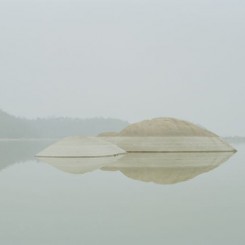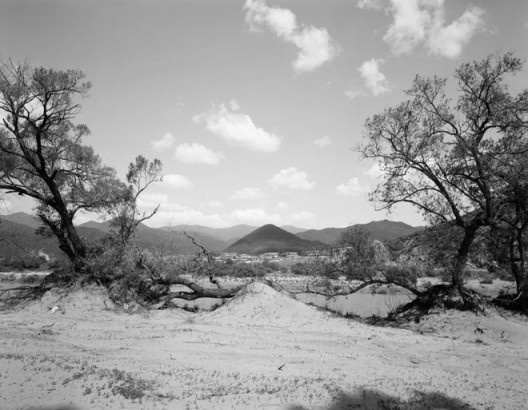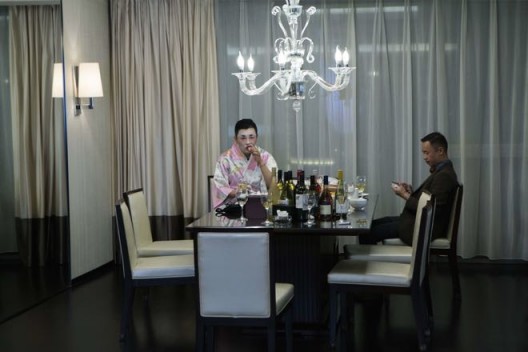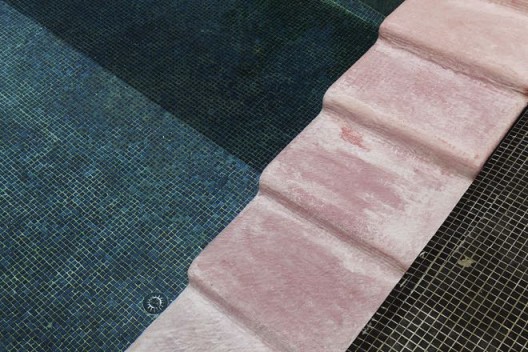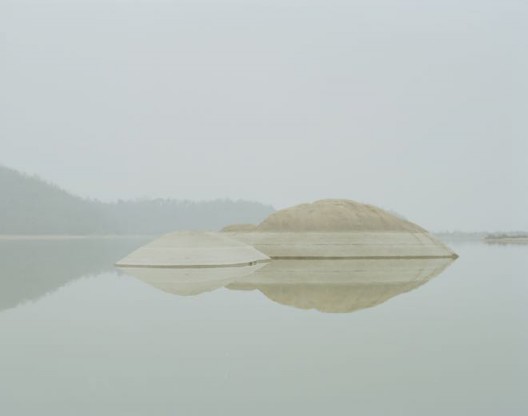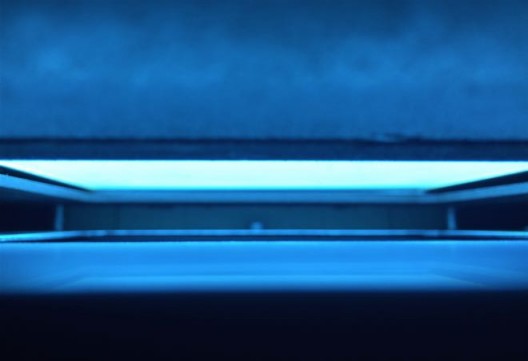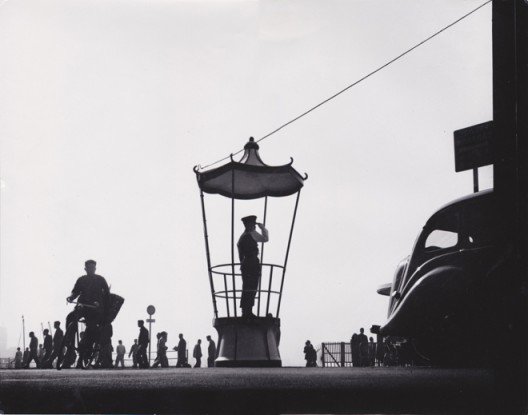Rebranded this year as PHOTOFAIRS | Shanghai, the fair formerly known as Photo Shanghai seems to have matured since its inaugural edition three years ago. The images of scantily clad starlets have been replaced by a new exhibition “Insights” showcasing new photographic techniques. Though there were complaints of weak sales, there is a strong consensus that Photofairs has been making a strong contribution to raising the profile of the medium.
“Photofairs Shanghai is helping to create and build the infrastructure of the photo market and to create a connection with the art system,” says Steven Harris, director of Shanghai’s m97 gallery (one of the two longest-running photography galleries in the city); “In the 20th century, we see as early as the ’20s and ’30s that photography was already being integrated into the fine art establishment [in the West]. You had museums taking photography out of the drawing department, and the establishment of curators like John Szarkowski from MoMA, Anne Tucker from [MFAH] Houston, and Sandra Phillips at SF MoMa, and these people built up connections that were massive. We don’t have a single person like that in China and that’s cause for concern.”
Beyond creating buzz which draws swarms of photo-enthusiasts, the fair also “creates an understanding of photography’s value as a collectible,” says Harris, “The point is that sales may not have been through the roof, but it’s a long game, and at this point the educational activities which raise the profile of the medium are much more important.”
Lise Li, director of Shanghai’s Vanguard Gallery, was impressed with both the foot traffic and the sales: “Sales this year were better than we expected, similar to the first year we participated. This time we brought three artists, two Japanese—Aki Lumi and Yuki Onodera—and a Chinese artist, Yi Xintong; all of these artists were collected, which made us really happy.”
Harris, who had two solo exhibitions on show in addition to the fair, sold the iconic “Stage of Life” (1954) by Hong Kong documentary photographer Fan Ho for 150,000 RMB and works by Wang Ningde for 130,000–180,000 RMB. Huang Yunhe, director of Ofoto Gallery, sold Zhang Bojun’s We (a series amassed over the course of seven years) for 33,000 RMB to a foreign client, and Tian Ye’s series Wandering Slowly (2002-9) for 12,000 RMB, but felt that sales were slower than the previous year. Jiao Xueyan, director of Hunsand Space, remarked “We had a few sales and met some middle-class executive-type collectors, which we will have to work on maintaining after the fair.” This sentiment was echoed by Lu Liqing, manager at Three Shadows +3 Gallery: “I didn’t have much chance to talk to other gallerists but I occasionally heard that sales weren’t ideal, and it seems to be the case. It’s still a long road.”
The fair needs to attract a broader public in order to create future potential clients. That said, the “photographer uncles”—older men in photographer’s vests aggressively poking their lenses into the booths of various galleries—were a nuisance to gallerists seeking to meet clients. Says Agnes Cohade, gallery partner of Art Plus Shanghai, “It was our first time at Photofairs Shanghai. It was far from our expectations regarding both the level and behavior of visitors [referring to the uncles] . . . The problem was that the fair was not able to bring actual collectors and potential buyers. We were very disappointed by the VIP evening and preview.”
The fair attracted a mix of roughly 80–90% Chinese viewers with few collectors from Asia or the West, and the cost of a booth can be quite a burden even when sales are average. Says Harris, “Photography has a problem because it’s a lower price point; it’s not like you can sell three paintings and then you’re done. You need a broader public, to keep the prices high. The equivalent of Han Lei in Germany would sell for 30,000-50,000 dollars—here its 30-50,000 RMB.”
Rain Lu, Director of L-Gallery in Chengdu, sees it as something of a work in progress: “The collection of photography has just begun in China; this is the third edition of Photofairs in Shanghai and we now see that there are more and more people paying attention to photography, but it is just one category in the realm of contemporary art, so we have to do a lot of work to familiarize people with the medium. “
Photofairs may be selling more ideas than artwork, and if the attendance of talks is any indication, the public seem to be eagerly absorbing it. “Michael Wolf’s talk was standing room only, but two years ago you could shoot a canon through that room. I saw 3-4 talks which were pretty packed, and that’s a way to allow the public to listen to the artists,” says Harris.
Around town
Elsewhere around town, spaces brought out a number of outstanding exhibitions that frankly overshadowed most of what was happening at the fair. M97’s solo exhibition “Stage of Life” featured Fan Ho’s cinematic images of 1950s Hong Kong—a mixture of street photography and something of the chiaroscuro drama of Ray K. Metzker. In their upstairs space, m97 showcased an ongoing project by Michael Wolf, “Informal Solutions”—photographs of discarded objects repurposed by Hong Kong’s urban poor which amount to unintentional installations of found objects which could be and are at home in a gallery.
At ShanghART, Jiang Pengyi explored landscape as a transcendental vehicle in the exhibition “Grace”. His remote, verdant hillsides are spliced in half by lone waterfalls—images taken within the arctic circle of the northern and southern hemispheres of lands untrammelled by mankind. This work has a formalistic dialogue with his other series “Trace” which features what appear to be light-leaked Polaroid films with a white line down the middle (echoing the waterfalls of “Grace”), which he then converts into “emulsion lifts” by removing the top layer of the Polaroid and placing the wet emulsion on to a piece of paper. Through the use of straight pins, we see the emulsion lifting off the paper in sinewy webs. Though each series is relatively strong, the use of the white line uniting the two created a connection in form only.
Up at m50, Ofoto featured a striking exhibition of Luo Yongjin, who is well-known for his architectural photography of gas stations, tobacco sheds and Kaiping watch towers (Kaiping Diaolou); Luo has taken a turn towards the abstract in this new exhibition called “Around”, with floating picture planes and dark-toned explorations of patterns and textures that are contrasted with brooding landscapes populated by phantom buildings.
Landscape was also on show at Shanghai Center of Photography with “Nature as a Subjective Place”, which sought to explore the construct of nature in the human consciousness. Most impressive were Lin Ran’s wildly textured landscapes which present nature as the formidable adversary of man, and Shi Guowei’s colorized manicured scenes of greenhouses and gardens which speak to the role of man as an architect of nature.
Finally, Liz Hingley’s “Shanghai Sacred” project at FL:EX Gallery offered a rare glimpse of spiritual territories; this involved a workshop where participants needed to create their own shrine in a columbarium-like structure. The workshop was an extension of her “Shanghai Sacred”—an important anthropological documentary project exploring the sacred life of Shanghai and portraying a multifaceted community of faiths including the Baha’is, Sikhs, Quakers, and Russian Orthodox communities.
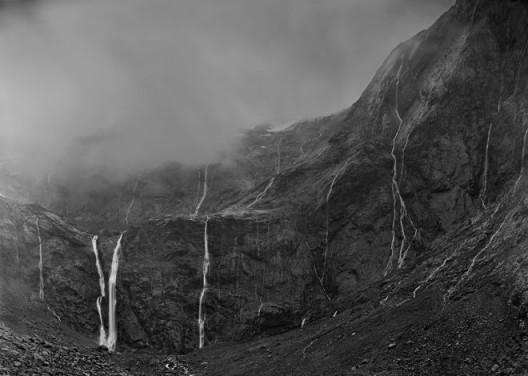
Jiang Pengyi , “Grace No. 8”, emulsion lift on acid free paper, 160 x 227 cm, 2016, courtesy Shanghart Gallery 蒋鹏奕,“给予 No.8”, 移膜、无酸卡纸, 160 x 227 cm, 2016 ,鸣谢香格纳
